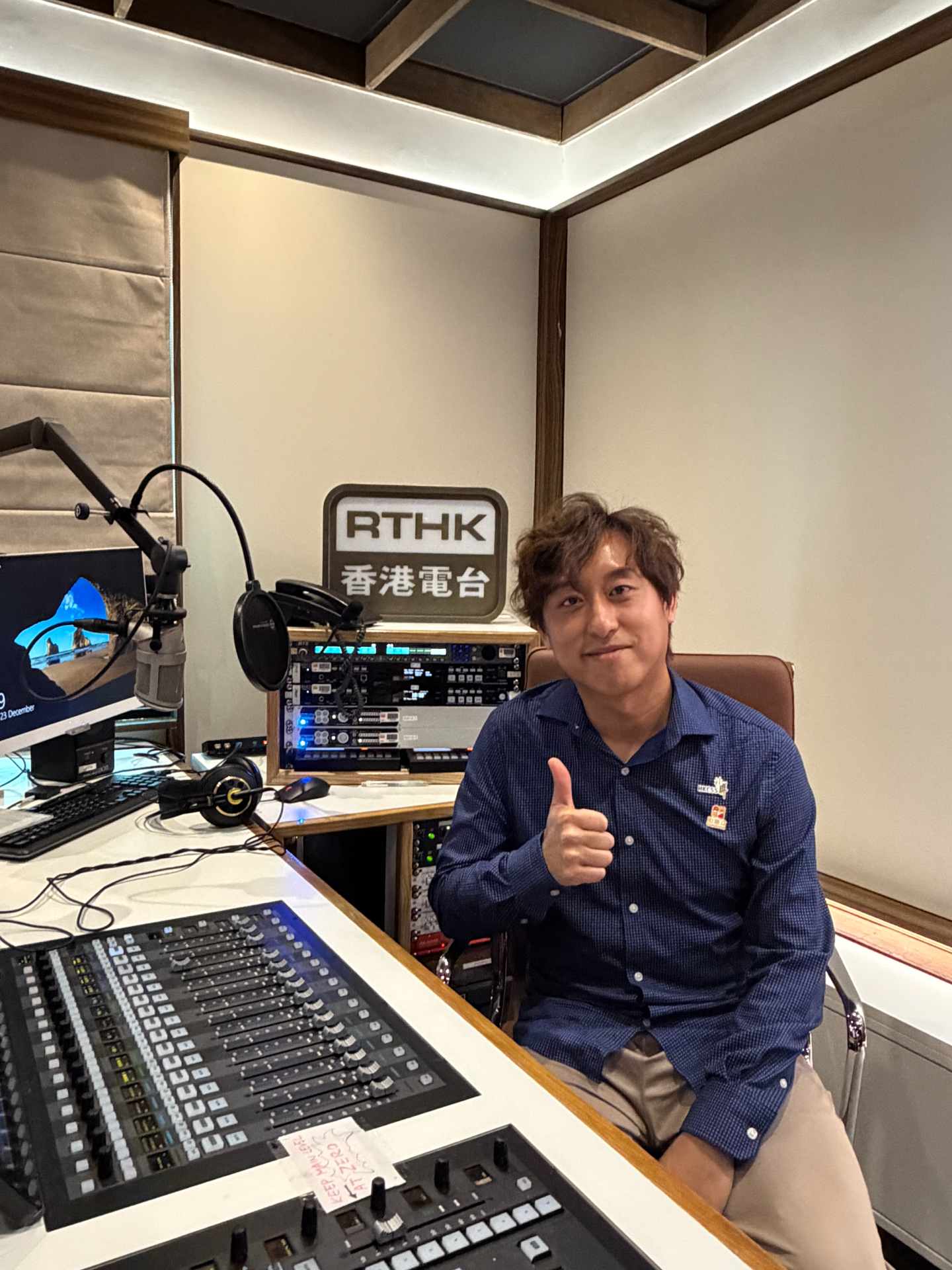Listen to #Hashtag Hong Kong every Sunday morning at 8.15
Focusing on issues affecting civil society, we'll hear from representatives of NGOs, associations, statutory bodies, and non-profit groups.
(Sundays 8.15am - 8.25am)

Hello everyone. Today, I’d like to talk about something that affects far more people than we might imagine, yet often goes unnoticed— and that’s dysphagia, or difficulty swallowing.
I want to begin with a real-life story: A few years ago, I met Mrs Cheung, a devoted daughter taking care of her elderly mother. At first, her mother coughed occasionally during meals. It didn’t seem serious, and her family thought it was partly related to aging. However, everything changed during the COVID-19 pandemic. After being infected, her mother’s ability to swallow deteriorated rapidly. She could no longer handle her usual meals, not even congee.
For Mrs. Cheung, each mealtime turned into a source of anxiety. She watched her mother lose weight, strength, and happiness, while every choking incident filled the family with dread. She expressed feeling helpless, caught between the need to safeguard her mother from the dangers of eating and the pain of watching her struggle with something as basic as eating. For many caregivers, this emotional burden is as heavy as the practical challenges they face.
This is not just a story; it’s real life, and it may resonate with many people because dysphagia happens more often than we realise.
Dysphagia simply means difficulty swallowing, but behind this simple term are complex causes. Swallowing actually involves over 30 muscles and several coordinated steps—from the mouth, to the throat, to the esophagus. When any part of this system is weakened or damaged, swallowing can become unsafe.
There are many possible causes. This includes neurological conditions such as stroke, dementia, or Parkinson’s disease, head-and-neck cancers, age-related weakening of muscles, or structural issues such as narrowing of the esophagus.
Symptoms of dysphagia can vary widely. Some individuals may cough or choke during meals, while others feel as though food is “stuck” in their throats. Many silently lose weight or become dehydrated because eating becomes stressful or exhausting. If untreated, dysphagia can lead to serious complications, including pneumonia, malnutrition, and repeated hospitalizations.
Speech therapists play a vital role in both diagnosing and treating this condition. Depending on the underlying cause, therapy may include strengthening exercises, postural adjustments, or modifications to the texture of food and drinks. For many individuals, safe eating begins with simple yet essential adaptations—like opting for softer, smoother, and easier-to-swallow foods.
In Hong Kong, dysphagia is becoming increasingly prevalent. Our population is aging rapidly, with census projections indicating that one in three residents will be 65 or older by 2036. As we live longer, more people will face swallowing difficulties at some point. This issue extends beyond medical concerns; it impacts families, caregivers, and the social systems that support them.
To ensure that older adults, individuals with disabilities, and patients recovering from illnesses can thrive, we must prioritize their ability to eat well. Eating is not just about nutrition; it embodies dignity, pleasure, and connection.
This is where Care Food comes into play.
Care Food is more than just “soft food” or blended meals; it’s thoughtfully designed to meet various swallowing abilities while remaining nutritious, visually appealing, and culturally familiar. Adhering to the IDDSI international standards, Care Food clarifies how soft or thick a food item should be to ensure safety for those with dysphagia.
However, Care Food goes beyond safety. It aims to restore confidence, dignity, and the joy of sharing meals. Rather than unappealing mush, Care Food dishes can be colorful, well-presented, and resemble the original ingredients—ranging from vegetables to dim sum. For someone with dysphagia, being able to enjoy a meal with family again has a profound emotional impact.
At the Hong Kong Council of Social Service, we recognized early on that dysphagia presents a growing challenge, making community-based solutions essential. Since 2017, we’ve been leading the development of Hong Kong’s Care Food ecosystem.
We collaborate with NGOs that support older adults and individuals with disabilities, speech therapists and healthcare professionals. We also work with restaurants and food suppliers, and government departments.
We develop standards, training programs, and public education campaigns, collaborating across sectors. Over 240 restaurants now offer Care Food menus, enabling worry-free dining for families. Our community program teaches caregivers—family members and domestic helpers alike—how to prepare safe and tasty meals at home, supported by a Care Food website with free learning videos. These efforts are transforming how Hong Kong addresses swallowing difficulties, and we are dedicated to making safe and enjoyable eating accessible to everyone.
Now, returning to the real-life story of Mrs. Cheung’s mother - after transitioning to Care Food under the guidance of her speech therapist, her mother’s appetite gradually returned. Meals became safer, more calming, and enjoyable. She regained strength and, most importantly, could again sit at the table and share meals with her family.
For Mrs. Cheung, this was a turning point. “Care Food gave us our mealtime back,” she said. “It restored my mother’s dignity, and it gives us hope.”
If you or a loved one is facing chewing or swallowing difficulties, know that you are not alone and support is available. Speak to a speech therapist or visit the HKCSS Care Food website to learn more about dysphagia and how Care Food can assist you.
